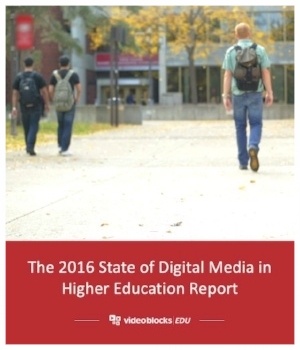
What interest could educators possibly have in the TED model for educational discourse? In recent months, we’ve written at length about the reasons students will underappreciate and undervalue their time in higher education, from vexation with the lack of technological resources on campus to a lack of faith in their instructors’ knowledge or passion. Regardless of the cause, the effect is that students are increasingly less engaged in their classrooms while many educators note that it is harder than ever to meaningfully connect with their pupils.
TED talks are decidedly en vogue at the moment, and some writers have even argued that with the plethora of branded online lectures and conferences across the globe, we’ve now reached peak TED. Yet the series’ popularity only continues to grow—a remarkable feat in an age in which public intellectualism often fails to reach audiences outside the intelligentsia echo chambers of the New York Times, The Atlantic, or NPR. Even more remarkable is that TED’s audiences are not just vast but also diverse, crossing generational divides between Millenials, Gen Xers, and Boomers, and appealing to more than just the privileged and educated. In under 20 minutes, most talks manage to cut through the noise, make connections, and inspire meaningful discussions that leave lasting impressions on their audiences.
Recently, TED released a video hosted by series curator Chris Anderson—who has helped coach and produce many of the most famous and headline-catching talks to date—specifically about the series’ approach to great public speaking. In addition to the advice in Andersons’ video, VideoBlocks for Education has also identified several important attributes of the talks for increasing educational discourse and impact. Together, we’ve identified the five most important teaching traits that educators can learn from TED talks.
1. The goal is to build an idea in someone else’s mind.
What is important to remember about these traits, as Anderson points out in the video, is that they build upon the central tenet that the speaker’s “number one task is to build an idea in someone else’s mind.” In essence, this requires a “quality over quantity” mindset: it isn’t about how much information can be conveyed in a single talk or class, but rather the quality of those ideas and their impact. For many educators, this can seem constraining and unrealistic, particularly when instructors in most fields—from engineering to English literature—are tasked with conferring an explicit and measurable amount of knowledge on their students by the end of the term.
What the TED model can help us do, if only in moderation, is to move further away from Paulo Freire’s “banking education” paradigm, in which students are only passive receptacles intended to receive information, and towards a more active, discursive educational dialog between students and educators.
2. Limit your talk to one major idea.
Anderson’s second point is essential for educators, if somewhat counterintuitive. The idea of limiting a lecture to only one idea might seem preposterous when a history professor needs to cover all of the socioeconomic ramifications of post-reconstruction trade policies in Japan, yet this is exactly why it is also so important. Anderson’s advice is not unlike that of most writing professors when explaining the importance of a thesis statement: “develop one idea; focus and explain properly, and make it vivid with context.” In essence, TED talks do what all well-constructed articles and lectures should also do—they present a central idea or theme around which information can be understood and organized. In turn, rather than oversimplifying the subjects, these major ideas become the lenses through which learners then understand all of the following information, making that knowledge both more useful and more relevant.
3. Give your listeners a reason to care and make it worth sharing.
Arguably, the motivation of “pay attention or risk failing this class” should be enough of a reason for most students to care about course lectures. And yet—as many educators can attest—this is far from the truth. More to the point, this sort of motivation isn’t likely to inspire passion for the subject or any sense of value in the knowledge conferred. While negative incentives have often proved to be effective measures for breaking bad habits, such as not studying at all, they also don’t incentivize students to do anything more than the bare minimum to ensure adequate performance. How then can educators inspire true knowledge-seeking and passion in their pupils? As Anderson suggests, teachers must take responsibility for stirring students’ curiosity, inspiring an intrinsic desire to learn more and “bridge that knowledge gap.”
4. Build your idea, piece by piece, using concepts that your audience already understands.
As Anderson notes, TED talk speakers “often forget that many of the terms and concepts that they live with are completely unfamiliar to their audiences.” Educators are perhaps just as guilty of this, if not more, particularly when working with students new to their field or topic of inquiry. Nothing will make a student shut down their own learning processes faster than the belief that they “don’t know” and perhaps “can’t ever know” what their instructors are talking about. While ideally students will eventually gain the core knowledge competencies that will make them familiar with field-specific terminology and concepts, it behooves educators to remember that students first need to be guided into the realm of the initiated.
5. Use media to make ideas relatable and accessible.
This is the one trait that Anderson doesn’t mention at all, and yet is just as vital to his video as it is to all other TED talks. We live in a post-literate age—an age in which visual communication is just as essential as the spoken word. Perhaps even more importantly, recent studies and educational scholars have highlighted the key role of multimodal learning—from audiovisual lectures, to hands-on practical instruction in remixed art or technology labs—for improved classroom learning. TED talks understand this, implicitly, even if Anderson doesn’t mention it by name. In his own talk, Anderson even uses animations and other visual cues to further communicate his idea to his audience. This is something fairly common among all talks in the TED series, and crucial for all educators in our visually and technologically driven society.
The Next Step
While it might not be practical to remodel every lecture and class into a mini TED series, there are certain elements and goals of the talks that educators can learn from and borrow, starting with these five traits. VideoBlocks for Education’s U-Curate content management platform and Digital Backpack can help educators make their lectures more accessible and media-rich, helping to bridge the “knowledge gap” that Anderson describes.
To learn more about bringing premium media resources to your classroom or campus, please visit U-Curate.com or Download the U-Curate Product Overview.

